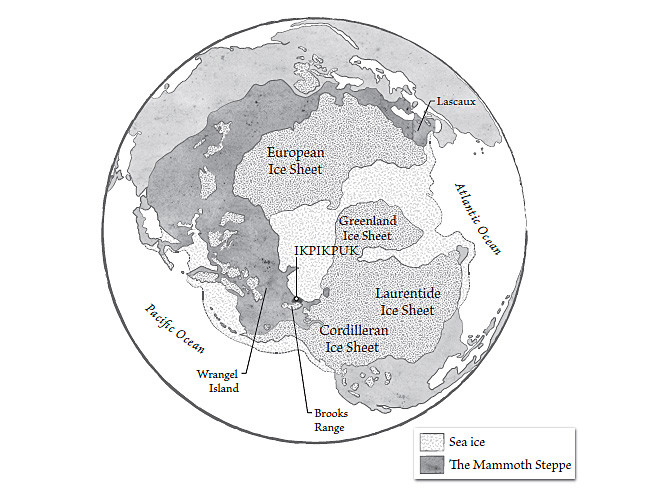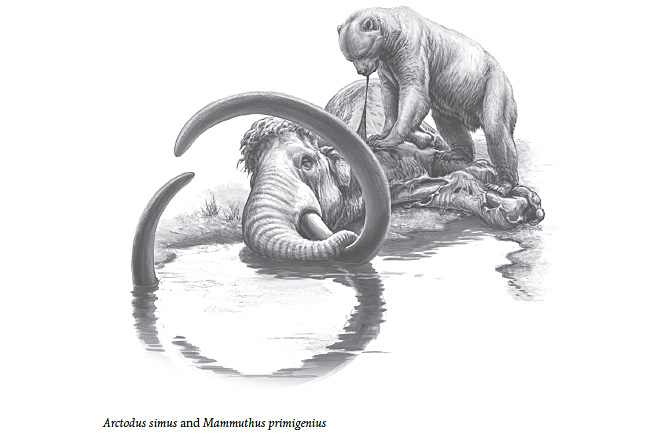If I had to explain the concept of Otherlands by Thomas Halliday to you in a single sentence, it would be that it’s a book that will take you as close to actual time travel as any words on a page could ever hope. Written by an award-winning young paleobiologist, the book takes readers on a voyage back through the Earth’s history, painting vivid pictures of long-gone landscapes and their inhabitants.
Please note: This post contains affiliate links.
Each of the sixteen chapters of Otherlands takes place in a single location, or at least on the land that will one day become that location as the tectonic plates shift to eventually form the landmasses we know today. This can in fact make Otherlands rather challenging to read because even if you have a reasonable knowledge of geography, once we go back far enough countries simply aren’t in the “right place.” As we travel through the book, we also work our way back in time. We begin in the Northern Plains of Alaska in the Pleistocene just 20,000 years ago, travel to Tinguiririca in Chile during the Oligocene 32 million years ago, then on to Swabia in Germany during the Jurassic 155 million years ago, Soom in South Africa during the Ordovician 444 million years ago, and finally to the Ediacara Hills of Australia during the Ediacaran 550 million years ago. Every location and time has been selected for a reason, for example, the chapter set in Gargano Italy takes place a little over 5.3 million years ago, just as the Zanclean flood refilled the Mediterranean and changed the surrounding area unimaginably, marking the literal end of an era.
Otherlands is written in the style of a travel guide or natural history book. In every chapter, we are transported back to the chosen time and place as if in our own personal time machine. Once there, Halliday paints a detailed picture of what we might see on any ordinary day in eras long before our species even existed. Increasingly strange vegetation is picked over by creatures I’d never heard of and they themselves are hunted by the predators of the era. Insects swarm over long evaporated lakes filled with bizarre fish, and all the while, life continues trying to exist no matter how challenging the circumstances. The language is beautiful but filled with endless scientific terminology (I ended up listening to the audiobook while reading to help with the pronunciation), and the mental pictures it creates are vivid. I can still “see” many of the locations I visited in Otherlands‘ pages in my head weeks after finishing the book.

In many ways, Otherlands could be considered a depressing book from a human perspective. We tend to consider ourselves to be central to the world, a vital cog in Earth’s machinery, but here we see the countless ways in which life has gone on without us. After chapter one, none of the creatures or plants talked about here ever saw a human being, and yet these entire ecosystems evolved, flourished, and died, as no doubt many more will in the future. We often think of the Earth as static: Alaska is frozen, Brazil is tropical, France is temperate—simply because that is how things have always been for the tiny span of time in which we have existed, but things are always changing and nothing will remain as it is today.
It could also be possible to see Otherlands as an argument against the catastrophe of modern-day climate change. In its past, our planet has been significantly hotter than the temperate planet it is today—a global rainforest—and also significantly colder—a glacier-covered “snowball earth.” Life, to paraphrase Dr. Ian Malcolm, has always found a way, so why is it a problem now? Halliday addresses this by explaining how the man-made climate change of today is problematic less because of the change itself, but because of its unprecedented pace. Whenever we see evidence of those major shifts in climate occurring quickly, we also see evidence of catastrophic extinction events occurring as a result. Evolution takes time, requiring even longer for larger and more complex creatures, and so when a fast-paced climate crisis occurs, only the smallest will be able to keep up and make it through. The current climate crisis that humans are creating is the fastest ever recorded. The planet will survive it, as will life itself, but the ecosystems on the other side won’t look like the ones we know today and may well be far less suitable for human beings.

My one fault with the book was that I wish the whole thing had been illustrated. Every chapter contained a single illustration of one creature found in that location, but with dozens more in every place, there were so many more I wanted to see, not to mention all the landscapes that were at times so alien I struggled to picture them in my mind. I can easily imagine a fully-illustrated collector’s edition coming out in the future, and I know I would immediately snap up a copy if one ever came to be. I also struggled at times with the decision to have the book work its way back in time rather than forward. I realize this was a conscious choice in order to move backward from more familiar flora, fauna, and landscapes to those more alien, however, with frequent discussions about how the different species would evolve in the future, this made the book at times feel as if it were leaping about in time and seemed to make it more confusing. However, these are minor gripes.
Otherlands is a book that will not only take you on a journey through time but will help you to appreciate the amazing planet we live on and just how varied life can be.
GeekMom received a copy of this title for review purposes.

